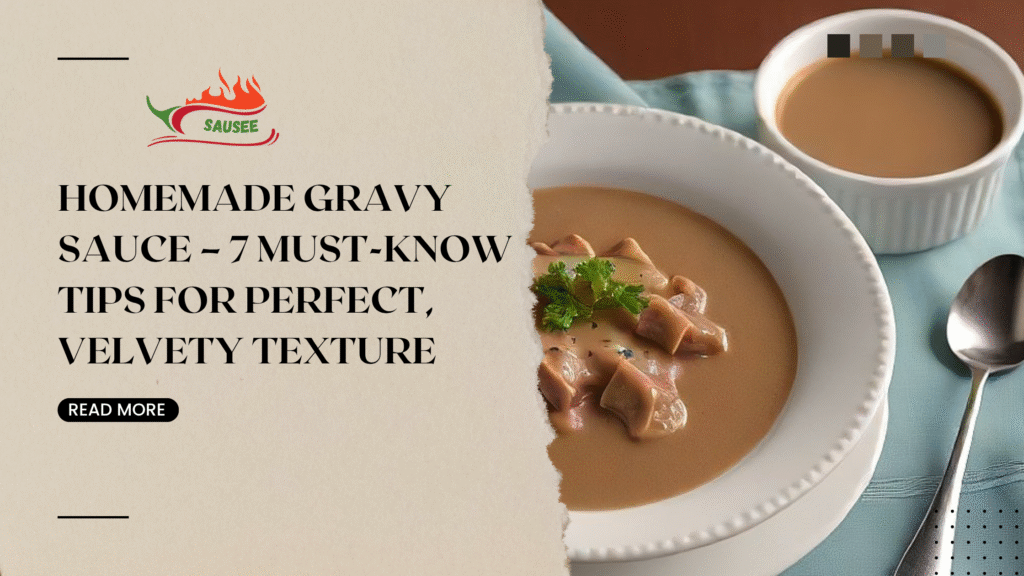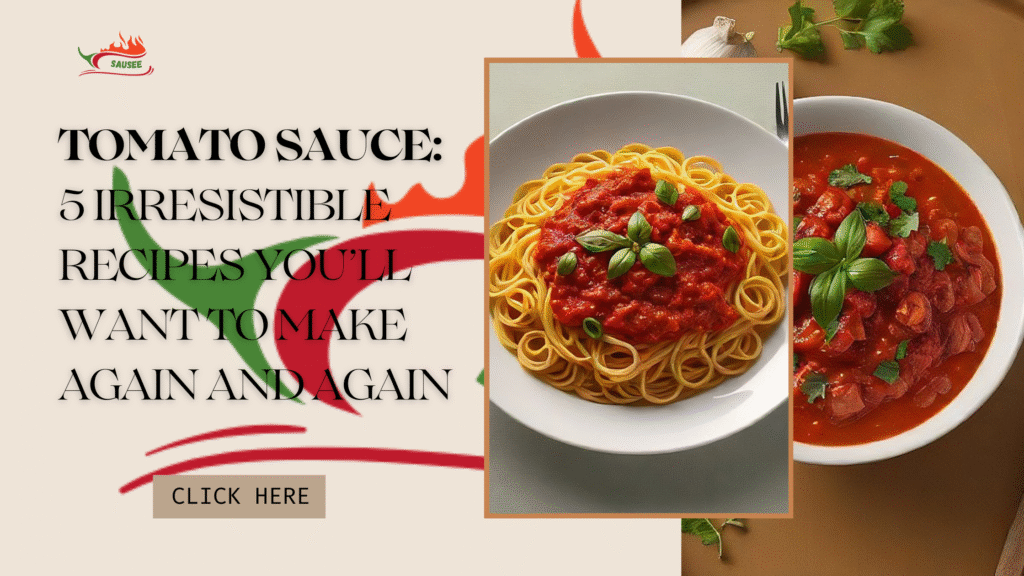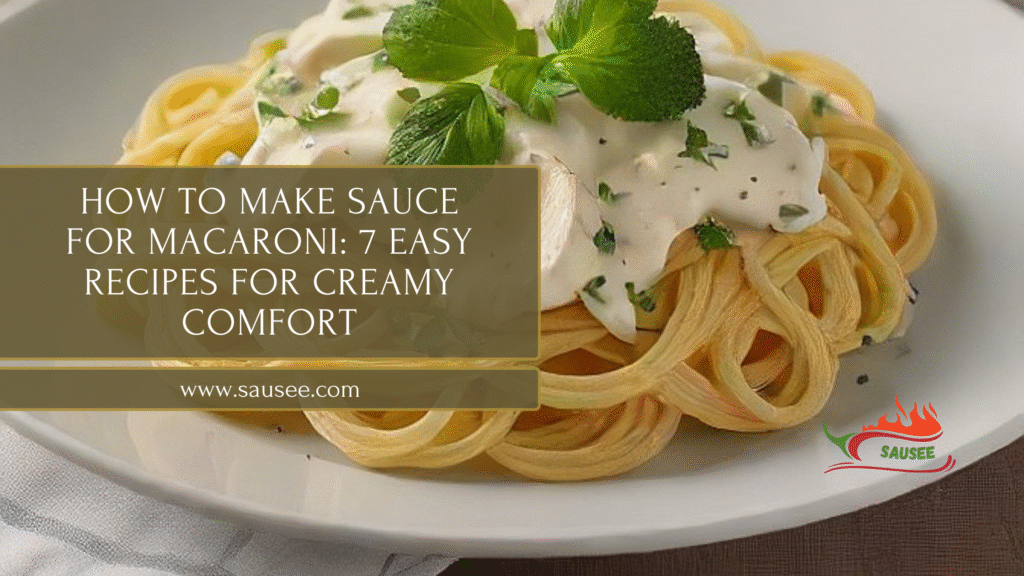Table of Contents
Introduction: Why Hollandaise Sauce Is a Culinary Essential
Velvety, creamy, and extremely smooth, the Hollandaise sauce remains one of the most popular among classic French foods to date. Having taken place back in the 17th century and perfected by French cook masters, this legendary sauce is one of the so-called French mother sauces, a kind of universal base where a whole range of other sauces are created.
Why then is Hollandaise so special? This is all thanks to the emulsion: a mix of egg yolks, melted butter, and lemon juice that is rapidly whisked together to enable it to be more creamy and smooth. The respite of decadence and freshness is provided by a rich-bright balance.
Hollandaise might be familiar to most as the finishing on a plate of perfectly poached Eggs Benedict, yet it is much more versatile than brunch. It goes wonderfully well with:
- Asparagus, broccoli, and green beans are such vegetables that may be steamed or grilled
- Poached salmon, crab cakes, and scallops are fine proteins
- Even very heavy food like steak and roasted potatoes can be added with some flavoring, with herbs or flavoring infusions
Here in this post, we are going to talk about 6 unusual methods of making Hollandaise sauce, which will make your food exciting every time it is brunch or dinner, or simply anything in between. Whether you are new to the idea of keeping an arsenal of homemade sauces in your kitchen or you just want to add more savor to your toolbox of flavors, this repertoire of recipes will guide you into adding the rich-tasting Hollandaise to your life in ways that you have not yet imagined before.
1. Classic Hollandaise Sauce – The Rich and Buttery Standard

Hollandaise sauce has been said to be the gold standard of teaching concerning the basics of brunch. It is due to this classic recipe that the Eggs Benedict are always so delicious, luscious, silky, and slinky, tasting like lemon. Nevertheless, once you learn how to make it yourself, you will get numerous ideas to use it even after the brunch.
The Traditional Recipe: Simple Yet Sophisticated
There is hardly any requirement more than three ingredients in making the classic Hollandaise sauce:
- Egg yolks (as generosity and form)
- Butter no salt (that is smooth in body and taste)
- Fresh and acidic lemon juice (to make it juicy and sour)
Yolks and lemon juice are beaten lightly with a low heat, or a sealskin, and the melted butter combines with the rest of the materials, and a soft, as well as silky, sauce is produced. The trick consists of a gradual, torturous heating, and a strenuous beating about–there is no shortcut at all in this matter
Pro Tips to Avoid Curdling and Get That Perfect Texture
The major reason many home cooks have for using Hollandaise is the fear that the sauce will curdle. So here is its way to stay stable and silky:
- Keep the temperature in check by using a double-boiler or a heatproof container placed inside some simmering water
- Keep the heat at a low to medium level because eggs would scramble when heated excessively
- To make an emulsion, whisk in the melted butter gradually so that the mixture stays stable
- Keep stirring the sauce until it thickens to a consistency that will allow it to hold on the back of a spoon
In case your sauce becomes too hard, use a tablespoon of hot water to loosen it up, so that it will be possible to pour the sauce.
2. Garlic Herb Hollandaise – Fresh, Savory, and Aromatic

Want to inject some added spice into your old brunch sauce? The best thing to change this is the Garlic Herb Hollandaise. Adding fresh herbs and garlic-filled flavours into the traditional base results in a sauce that is brighter and more flavour-rich, with the flavour of the garden.
How to Add Herbs and Garlic the Right Way
Take the simple formula of Hollandaise, and add thereto:
- 1 green garlic, chopped, a little fried or roasted, to produce a slight flavour
- Cut up fine strips of some fresh herbs, e.g., parsley, chives, or tarragon
- Optional (to give coloration): a grain of lemon zest, pumpkin, or a touch of ground pepper, black
Once you add the herbs and garlic, there must already be emulsification to ensure that the sauces keep on being smooth with fresh tastes of herbs and garlic.
3. Spicy Chipotle Hollandaise – Smoky Heat Meets Creamy Richness

Do you like spicy food? After that, there is no way you can be resistant to this Spicy Chipotle Hollandaise. It makes use of the rich, luscious base of old-school Hollandaise and adds a strong flavor and a hint of smoke to it to instantly kick you into gear in terms of your food.
How to Add Chipotle or Heat the Right Way
The Hollandaise sauce is taken and mixed with the source of heat:
- 1 2 teaspoon chipotle peppers, adobo, finely chopped or pureed
- Or simply add a few drops of your favorite hot spicy sauce to it.
- To make it more interesting and to balance, add some lime juice
Mix the cooked chipotle in the final sauce or beat it up so that it has a uniform consistency. Adjust and tune it, that is making the spiciness of the sauce to your palate.
Delicious Pairings for Spicy Chipotle Hollandaise
It’ saying smoky is ideal to use with recipes that have a Southwestern or Latin flair:
- Huevos rancheros or breakfast burritos- places a smooth, spicy coating on it
- Tacos (with fish or Shrimp) – the crisp and the smokiness are balanced out
- Corn fritters, roast sweet potatoes, or grilled corn – a daring side dish
- Even avocado toast is taken seriously with a couple of drops of this sauce
Check Out: Homemade Gravy Sauce – 7 Must-Know Tips for Perfect, Velvety Texture.
4. Lemon-Dill Hollandaise – Light, Bright, and Great with Fish

In case you feel like trying something new on the old recipe, Lemon-Dill Hollandaise is a clear bright citrusy taste with a hint of herbal brightness. It is a lighter form, and it tastes absolutely wonderful with seafood and vegetables, but does not lose all the rich thickness of a Hollandaise.
How to Incorporate Fresh Dill and Lemon Zest
Begin with your basic Hollandaise sauce, which you improve by:
- 1+2 teaspoons fresh dill, finely cut
- 1/2 tsp of lemon zest to give a high citrus note
- Optional: a teaspoon or so more lemon juice to your gustatory preferences
Include them stirred in when the butter and yolks have been emulsified so that the fresh dill does not lose its color and taste.
Best Pairings for Lemon-Dill Hollandaise
Such a change is perfect to fit seafood enthusiasts and veggie-centered dishes:
- Salmon or trout – grilled, baked, or poached
- Crab cakes – includes lightness and rich flavor
- Fresh asparagus or green beans that have been steamed- a seasonal spring side, ready to go
- Low-carb, gourmet, zucchini noodles or roasted cauliflower
5. Béarnaise-Style Hollandaise – A Tangy Take with Vinegar & Shallots

With the possibility that you love the Hollandaise but feel like just adding some extra zest as well as some spice, then this Bearnaise-style Hollandaise is the spin-off. It is a twist on the classical French Bearnaise sauce with shallots, vinegar, and herbs giving it a sour, tasty turn from that original.
How to Make a Béarnaise-Inspired Hollandaise
To make something striking out of your ordinary Hollandaise:
- Begin by reducing 1 tablespoon of chopped shallots combined with 2 tablespoons of tarragon or white wine vinegar to a simmer.
- Strain, and allow the reduction to cool a little
- Include the reduction in your emulsified base Hollandaise sauce
- Optional: Mix in fresh Tarragon or chervil as well to round out with a herbal flavor
This procedure may also add acidity and complexity to the sauce, thus it is eventually more full bodied and aromatic, yet not heavydomed.
Perfect Pairings for Béarnaise-Style Hollandaise
The variation goes best with foods to which assertive, many-layered flavors can be applied:
- Roasted or grilled meat, such as steak or beef tenderloin, is one of the traditional French combinations
- Roasted portobello mushroom: the earthiness vs the tanginess
- Eggs Florentine, spinach, and poached eggs are enhanced with the added zing
- Even potatoes or artichokes roasted become a feast with this sauce
6. Avocado Hollandaise – A Modern, Dairy-Free Twist

Whether you are not dairy-free or vegan or just want to have a healthier substitute, this Avocado Hollandaise can be made as an alternative to the same. It substitutes the butter with the avocado, therefore maintaining the creamy richness that is complemented with healthy fats, fiber, and a beautiful green color.
How to Make Avocado Hollandaise
This variation omits the emulsified butter–but even here, there is no falling short either in flavor or texture:
- Add to a blender:
- 1 avocado lepeado
- 2 tables Love of lemon juice
- 1/4 cup lukewarm water (add or subtract depending upon the consistency)
- 1 teaspoon Dijon mustard (A depth and tang)
- To taste salt and pepper
- Beat smooth and creamy. Fry a little in a pan or serve at room temperature. Also, a pinch of turmeric or nutritional yeast can be added to make it a golden color and give it a cheesy taste.
Best Uses for Avocado Hollandaise
The reason why this sauce is ideal with this is that it is lighter and plant-based:
- Vegan/vegetarian Benedict egg
- carrots, sweet potatoes, or/ cauliflower (you might roast)
- Grain bowls or avocado toast
- Grilled or tempeh
It is not so time-consuming, it is vegan and extremely nutritious, an ideal discovery for people who like to eat something delicious and useful.
Conclusion: Which Hollandaise Variation Will You Try First?
Creamy and decadent or spicy and strong, but there is one common trait in both of them: the pump of Hollandaise sauce can become a great topping for the Eggs Benedict, but at the same time, a delicious foundation for numerous culinary adventures.
So here is the recap of the 6 must-try variations:
- The standard Dutch Hollandaise- Brunch gold standard
- Fresh and savory hollandaise contains garlic and herb flavor
- Spicy Chipotle Hollandaise: Creamy, smoky, and spicy with a little kick
- Lemon-Dill Hollandaise – Highly light, citrusy, ideal for seafood
- Berenaise-Type Hollandaise – A tart, leafy, and assertive one
- Avocado Hollandaise- Contemporary Diary Free Option
It has more than one form, regardless of your preferences and diet, which makes your dish even better. Try these styles whether you are preparing a gourmet brunch at home or wanting to give a weeknight dinner an added flair of spice or flair.
Give one a go today to take your brunch or dinner to the next level, and do not shy away from tackling new pairings and adding personal flair.
For more info: Click Here.
FAQs About Hollandaise Sauce
1. Can Hollandaise sauce be made ahead of time?
Yes, and it is more tasty when in its fresh form. And just in case you need to make it beforehand, keep it in the fridge in a tightly closed container, and it can be used up to 1-2 days. Reheat a little in a water bath, or a bowl over a pan of hot water. The microwave is not supposed to be used, as it can cause breaking of sauce to break.
2. What if my sauce splits—can I fix it?
Absolutely. And even in the event that your Hollandaise sauce breaks or curdles, it is not yet a disaster. Add in a teaspoon of warm water or lemon juice to make it combine. Or take fresh egg yolk in another dish, stir the shattered sauce a little, and gradually stir in.
3. Is Hollandaise safe to eat with raw egg yolks?
Thereafter, Hollandaise sauce can be eaten when made in various forms. The boiled eggs are skillfully done by the use of a slim, marginal recess through the behavior of emulsification (like the isolated cooker). In order to be on the safe side, one should at least use pasteurized eggs when serving them to someone with a low immune system.





